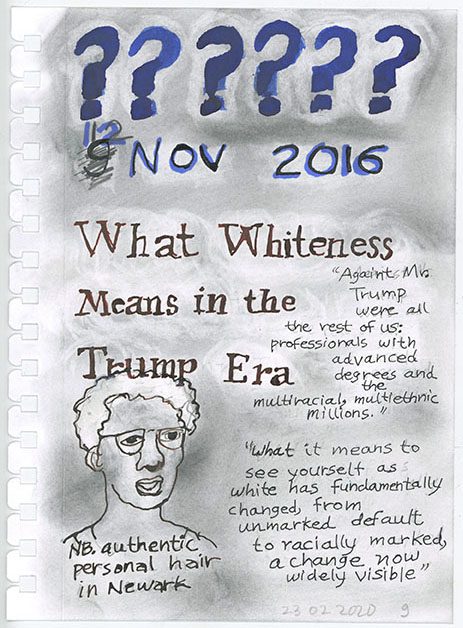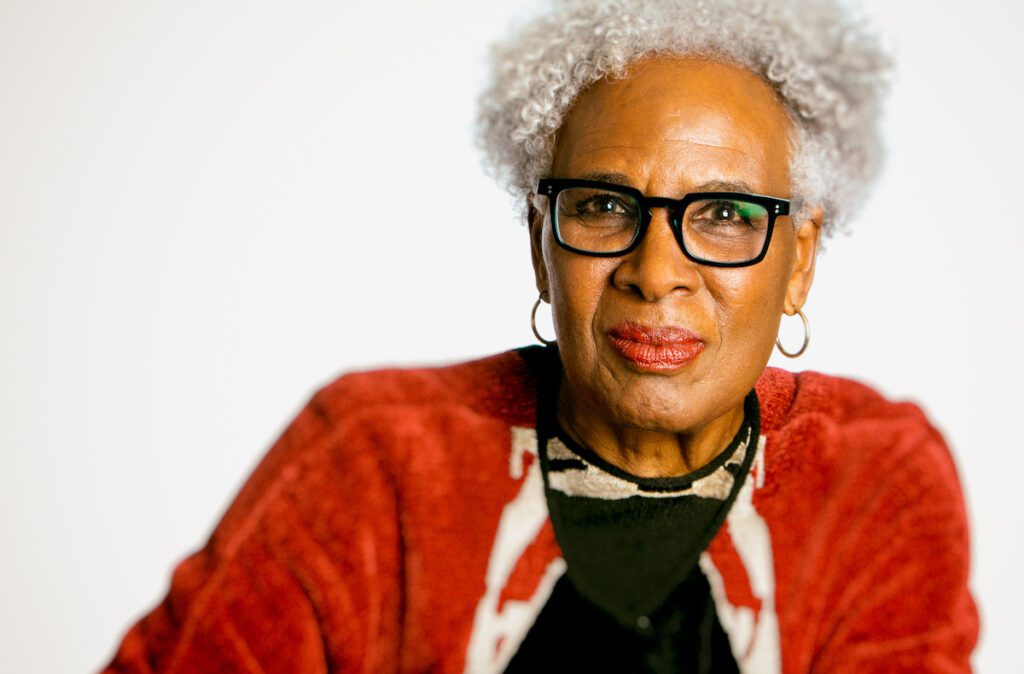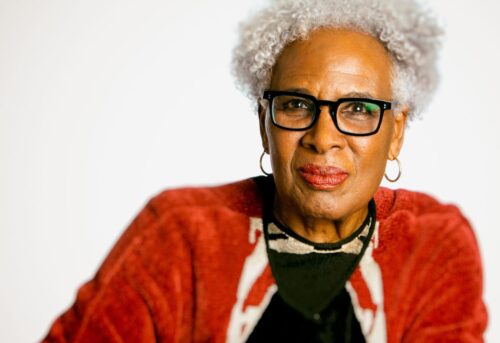Dr. Nell Irvin Painter doesn’t have long-range plans.
The books she wrote in her previous life as a historian each began with a single question. Why are white people called Caucasians? The History of White People. Which Sojourner Truth is the real one: The composed woman sitting for a well-known portrait, or the equal rights activist known for giving fiery speeches? Sojourner Truth, A Life, A Symbol.
Painter’s current life as an artist is much the same. A project she’s beginning this fall seeks to answer a single question: How did we get from Barack Obama to Donald Trump?
“I can start with a piece, but the actual making is what gets me to the next step,” she said.

For decades, Painter’s own next steps made perfect sense. Raised in an educated household in Oakland, California, she holds degrees from the University of California, Berkeley, the University of California, Los Angeles, and Harvard University. She taught history at Harvard, the University of Pennsylvania, the University of North Carolina, and Princeton University.
She forged her career alongside the Civil Rights Movement, which was changing the way history was being written. Black history and women’s history were emerging fields, and in the 1970s she realized she was uniquely suited to write about these topics.
And despite being a young black woman in a field dominated at that time by older white men, she had a support system and mentors who pushed her on.
“There’s this built-in level of hassle of being black in America, of being female in America, and of being black female in America,” she said. “People looking at you and wondering why you are there, interrupting you when you speak.
“I also always had people who were on my side. I couldn’t have gotten my first job if I hadn’t had people who were pulling for me. All along the way, there were people who were with me and who were shielding me and helping me along.”
In her 60s, when most people consider retirement, Painter took another first step, this time into a new life as an artist. She’d actually started out in college as an art major, so she picked up there and enrolled in the Mason Gross School of the Arts at Rutgers. A master’s degree from the Rhode Island School of Design followed in 2011.
She had the talent, but she initially struggled to reconcile Nell Irvin Painter the historian and Nell Painter the artist.
“It took me a decade to be able to put myself together because, for one thing, I was 100 percent academic,” she said. “But in the art world, ‘academic’ is one of the worst words you could use, so I didn’t want to be academic anymore. But I kept being drawn to topics and images that had to do with history.
“So, I just struggled and struggled for 10 years until I finally found a way to let text back into my artwork. So, now I combine text and images, and it feels fine.”

One piece, completed during a one-month residency at the Bogliasco Foundation in Italy in early 2020, leads off from her book The History of White People and is a combination of drawing and text. Called “American Whiteness Since Trump,” its 28 pages walk viewers through the years of Trump’s presidency to show how an identity of whiteness began to take shape.
“We’re used to focusing on blackness,” she said. “We’ve had two generations of scholarship about blackness; we don’t have that depth of scholarship about whiteness.”
Following the George Floyd demonstrations, Painter made a piece called “From Slavery to Freedom.” She describes it as a hopeful piece and said she let herself hope that “we were going to grapple in a serious way with white supremacy and police brutality.” It’s still her hope.
Reinventing herself at 64 wasn’t easy. If she had known how hard it was going to be, she doesn’t know that she would have done it. But it was something she wanted to do, and after a storied career, she could. As a woman, she knows she isn’t supposed to say that, and she’s grateful she can.
Today, she is the artist she wants to be; the artist she is. Her work is unique, and she makes the images she wants to make. It’s up to us, her viewers, to make the meaning.
“I can’t tell them what I want them to see, but I want them to be able to stay engaged for a while, to spend time with the work and to find different levels of meaning in it, their meaning,” she said.
Painter’s art today is more political than it was when she started. Perhaps it’s the academic historian in her, sneaking in its voice in response to social issues both new and old.
Though older than most of her art school peers, she viewed her age as an advantage. Adult learners may be looked at oddly by their younger contemporaries, but there is wisdom. Your B.S. detector is strong, she said. You have a sense of self and are less likely to be vulnerable to the naysayers. You know that life is long.
“I remember when I was 23, I thought, ‘My God, I’m 23 already and I haven’t changed the world,’ and I was serious,” she said. “I would never think that at 43 or 53 or 63. I know better, and I think older people know better what we can do to tackle that.
“Not to try to be sweeping or revolutionary, but to work for the good in a way that you can do good.”
Dr. Nell Irvin Painter will speak during the fourth general session of Honors Institute 2021, June 23-25.




